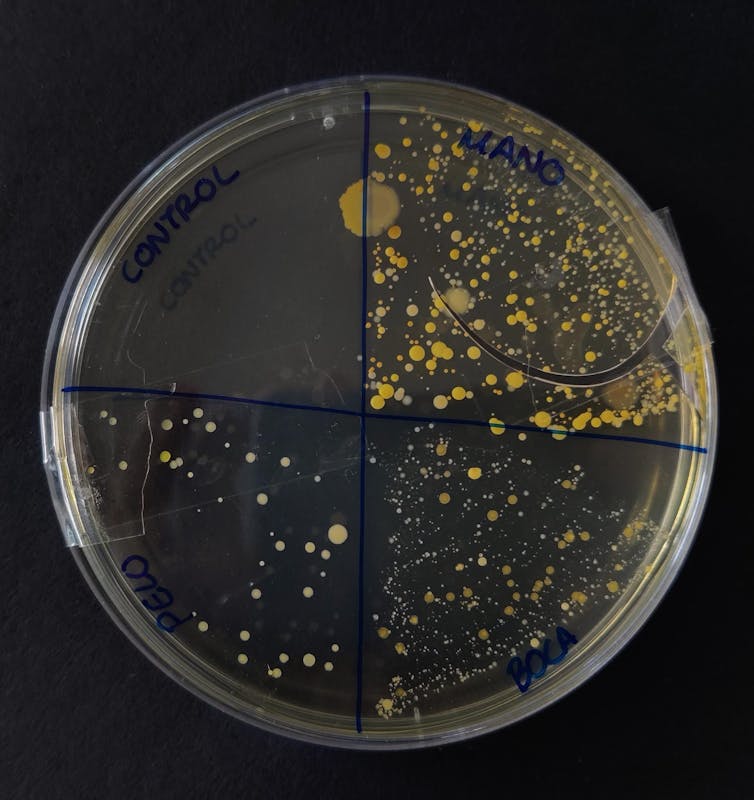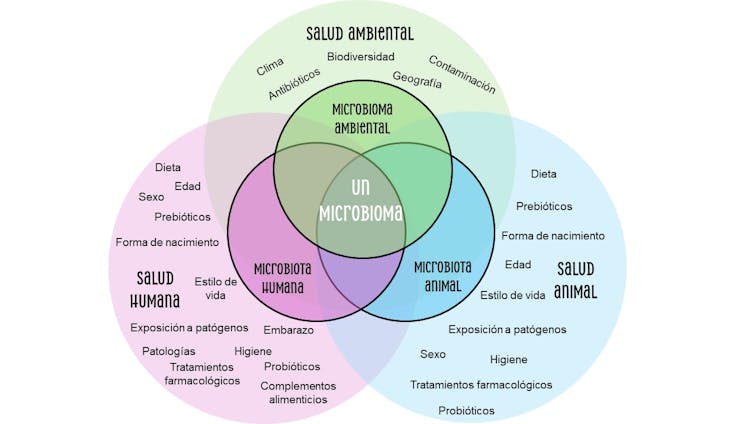The One Microbiome Approach in the Classroom

Currently, topics such as microbiota are highly influential in the media, with the terms microbiota and microbiome often used interchangeably. The term microbiota refers to the collection of microorganisms (bacteria, archaea, protozoa, yeast, fungi and viruses) that coexist with us in nature. The microbiome can be defined as the complex network of interactions that these microorganisms establish with our cells. It would be like a microscopic ecosystem!
Microbiota is taught in general education classes while working on the content of microbiology. But understanding the microbiota and its functions on a global scale requires the application of vision One health.
This vision is based on the premise that animal health, environmental health and human health are interdependent. Thus, our health will depend on more factors than an active lifestyle and a healthy diet. The health of animals and our planet also plays a very important role. In short, it’s about elevating the concept of microbiota from a global perspective because everything is interconnected.
Read more: If health is one thing, why do we teach it in parts?
Microbiota training within the framework of the “One Health” concept
We are superorganisms made up of millions of microbes that come from outside. Understanding our body as a whole involves developing a systemic view. To do this, it is necessary to propose activities that will help understand the influence of factors from three areas of life. One health (animals, environment and human health), linking them with the concept of microbiota. To do this, we can imagine various real-life scenarios involving human contact with animals and the environment.
We propose four steps to follow to create teaching situations about microbiota using this approach. One microbiome:
1. An experiment to make sure that microorganisms exist in different parts of the body..
Although the greatest microbial diversity is found in the colon and mouth, our microbes colonize many other parts of the body, such as the skin, vagina, respiratory tract, and even the uterus. Its diversity will largely depend on our relationship with the environment and its microbiota.
It is very simple to experimentally test this symbiosis of our body and microbes, as well as their spread. All we need is a few culture cups, a few swabs, and a volunteer to plant their “little residents.” This will also allow us to understand that although each part of the body has its own microbiota, its influence on our body is systemic in nature, since it affects it as a whole.

AuthorsCC BY-SA
2. Map the microorganisms in the body..
Creating these maps after conducting an experiment helps students identify which parts of the body contain microorganisms other than those they have already cultured. Using a color code, they can distinguish beneficial microorganisms from harmful ones.
More than 10,000 types of microbes live in our bodies. Of these, less than 1% can be considered potential pathogens. They will not pose a threat to us as long as they are in balance.
The change in our microbes is known as dysbacteriosis. This dysbiosis can occur for a variety of reasons, such as antibiotic use, stress, and even climate change or pollutants. So, preventing harmful changes to our microbiota also means taking care of our planet.

AuthorsCC BY-SA
3. Identify the factors of the three areas of health and relate them to each other to understand the concept One microbiome.
So far, students have been able to work on aspects related to the distribution and abundance of microorganisms. In this new phase, we intend to analyze how each of the three domains (human, animal and environmental) directly influences our microbiota: the characteristics of any living thing are determined by the environment in which it develops and the environmental changes that have affected our microbiota. our evolution they also influenced our microbes.
4. Model of applying scientific and systems thinking in practice.
To practice systems thinking, we propose to develop a model in which three areas One health in a hypothetical real-life case of a person with a certain lifestyle and microbiota profile.
This will be our model One microbiomewhich we can offer to already prepared students to relate to their individual case studies, or we can even ask them to prepare it themselves using a range of data we provide them with.

AuthorsCC BY-SA
Global vision of health and microorganisms
Visualizing microorganisms through experiments and creating maps of their distribution and models to understand interactions can help develop a global vision of how the three domains of the concept One health They affect our microbiota.
However, science curricula continue to present content in silos as health and the environment are taught as independent units. Moreover, microbiota is usually studied exclusively using human health as an example.
Integrating environmental and health content is essential for developing a global vision of the microbiota.
The learning situations we offer our students should attempt to integrate, rather than differentiate, the three areas of learning. One health.
To move to a learning model like One health Scientific education of society and constant dialogue between educators and researchers are necessary.
